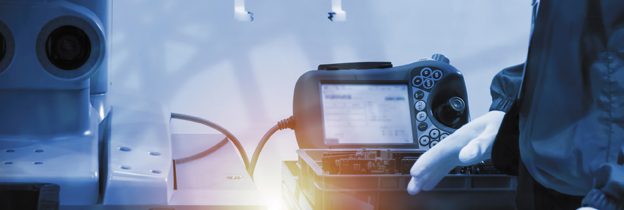Collaborative Robots Streamline Logistics Operations
Article from MHI Solutions Magazine
The growing use of collaborative robots, or cobots, is giving some warehousing and distribution centers a much-needed productivity boost. Guided by sensors, cameras and artificial intelligence (AI), cobots can move autonomously and work alongside human employees to complete various tasks. Unlike large industrial robots, they are small, lightweight and flexible enough to work in a warehouse environment where people and equipment are constantly on the move.
The use of collaborative robots in logistics centers isn’t widespread yet, but there’s growing interest in the technology. Interact Analysis, a marketing intelligence firm, says there will be “strong and sustained growth” for the cobot industry over the next several years. It predicts that by 2023 logistics will become the second largest user of cobots, after electronics.
Affordability is one reason why logistics companies find cobots appealing. “It’s a relatively low entry point that opens up the door to these cobots for smaller and medium-sized enterprises that haven’t been able to afford large-scale automation,” said Ash Sharma, Interact Analysis’ managing director and research director for commercial drones and robotics.
Warehouse operations often begin by using cobots for picking operations. “It makes the process easier because of the intelligence in the algorithms that go into mapping out how the robot travels in the warehouse. It reduces the amount of walking that a picker associate is doing,” said Fergal Glynn, vice president of marketing at MHI member 6 River Systems (6RS). Picking accuracy rates also improve when cobots guide and then confirm workers’ picks.
Cobots reduce the physical strain on warehouse workers, as well. “As we try to push the envelope in terms of getting higher and higher productivity, we tend to put more and more weight on carts, and it’s ergonomically challenging to push around a heavy cart all day,” said Russ Meller, vice president, solution design and research and development at MHI member Fortna Inc. With cobots taking on those loads, the workers have less chance of injuring themselves. Employees who aren’t hurt and who have fewer physical demands put on them—less walking and lighter loads—are more likely to stay in their jobs. That means cobots could help ease chronic labor shortages at warehouses.
Continue reading full article in MHI Solutions Magazine





